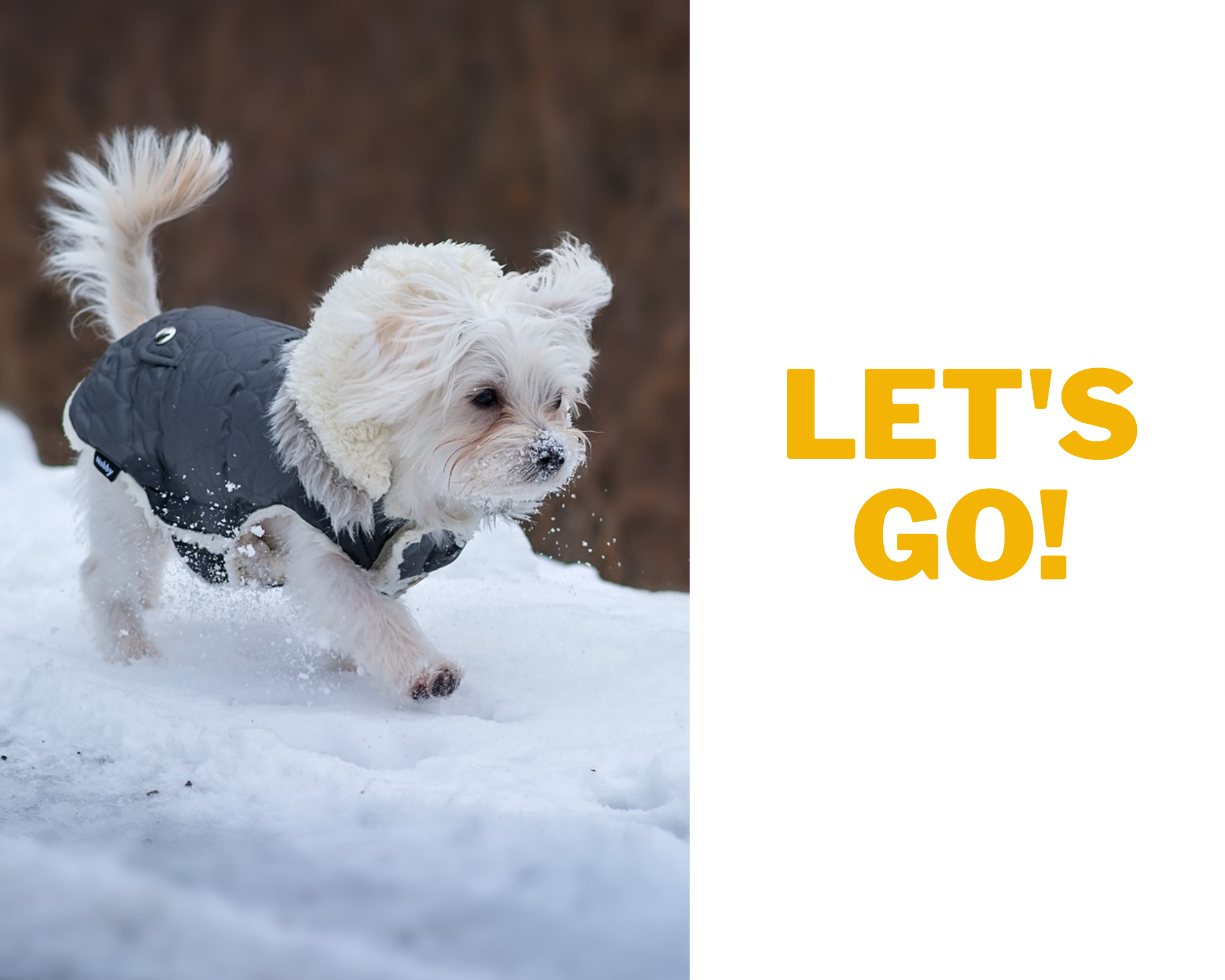
Six Minute Read (1900 Words)
Since you plan to help your small dog live a long and healthy life, and you’d like the same for yourself, I have a challenge for you: let’s walk our small dogs at least 150 minutes every week. That’s very roughly the minimum recommended walking for both people and small dogs alike. 22 minutes a day.
Easy, right?
That’s what I thought. I mean, I love the outdoors. I can brave the snow, the rain, the cold.
But lately. Yes, lately….the wind … the cold Northeast wind is killing me.
I’ve been making excuses, and Phoebe’s been making due staring at the world outside from a favorite perch.
You get the picture.

Walk Your Small Dog Every Day: The Universe Likes It
But then the universe stuck her nose into my rationalizing. Like a know-it-all friend who actually DOES know it all, she started throwing wrenches in my excuses.
While researching my next book about raising happy, well-socialized small dogs, I kept running across articles with dire warnings about people who don’t walk enough. Or, I’d find studies showing how much healthier dogs are when they’re walked regularly.
The universe not so subtly showed me the actual science behind the health of regular dog walking so frequently, she might as well have taken out an ad on that bus stop billboard I see on my way to work everyday.
And then, she brought my neighbors into it.
Don’t get me wrong. Certainly, I love my neighbors. But if you’re someone (like me, as I get older) who sometimes experiences spurts of excuse-making, it’s hard to live among these hardy New-England-Weather-Be-Damned people. Every day, no matter the weather, they’re out walking their dogs. And it’s not just one or two braving the wind, wet or cold.
Often, entire families, several generations deep, venture out in pretty steady rain, with two or three kids puddle-jumping, and the dog in a raincoat following suit.
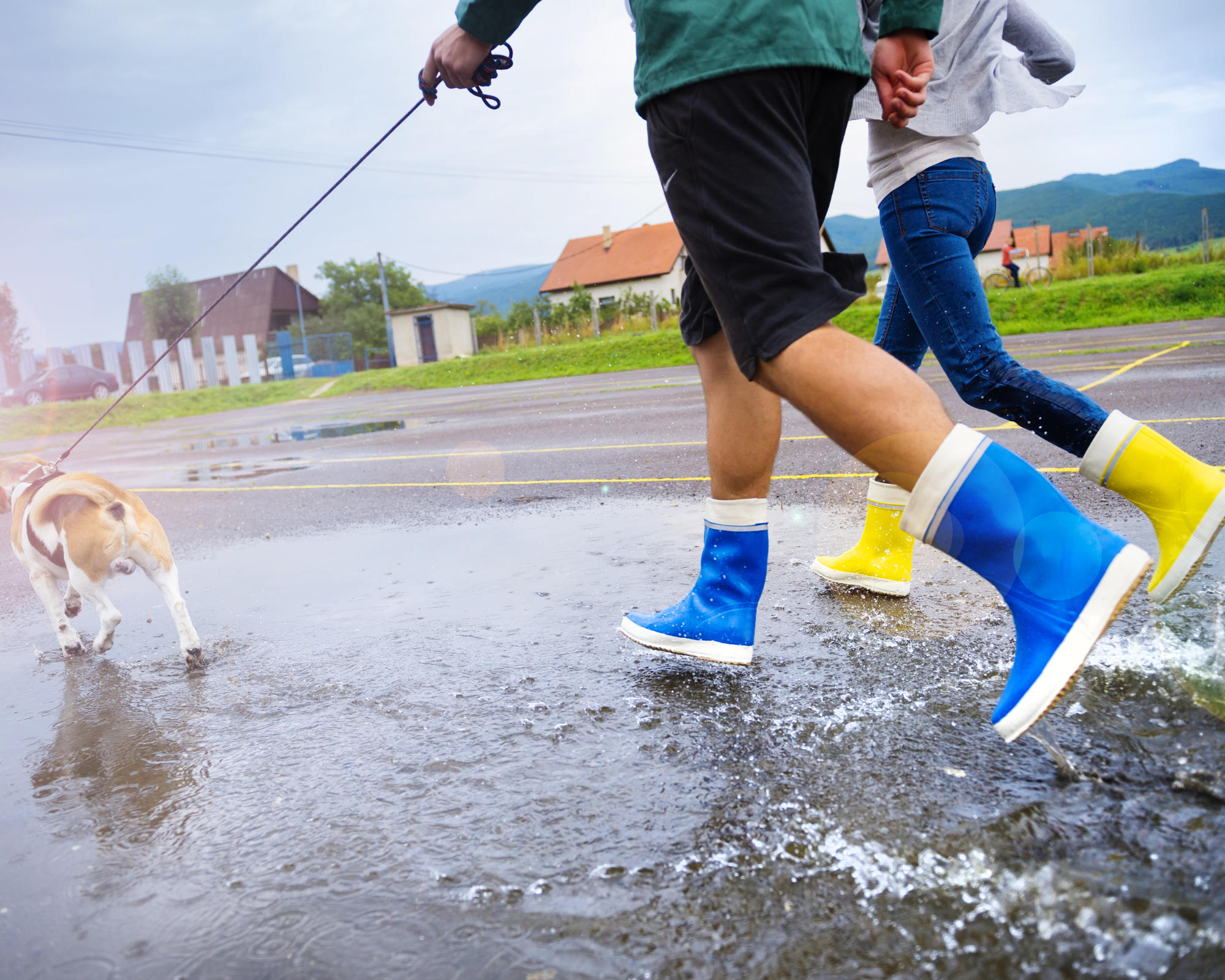
What Does Science Say About Walking Small Dogs?
So, between my neighbors showing me the way and the universe tossing science in my path at every turn, my better self made a resolution: It’s no longer enough for me to rely on our active outdoor lifestyle and then throwing in walks when the conditions are to my liking.
People need regular walks. People over 50 REALLY need regular walks, and I’m a decade plus beyond that.
Just as important, our small dogs need regular walks. The movement and outdoor adventures keep their minds sharp, their attitudes upbeat, and their bodies fit.
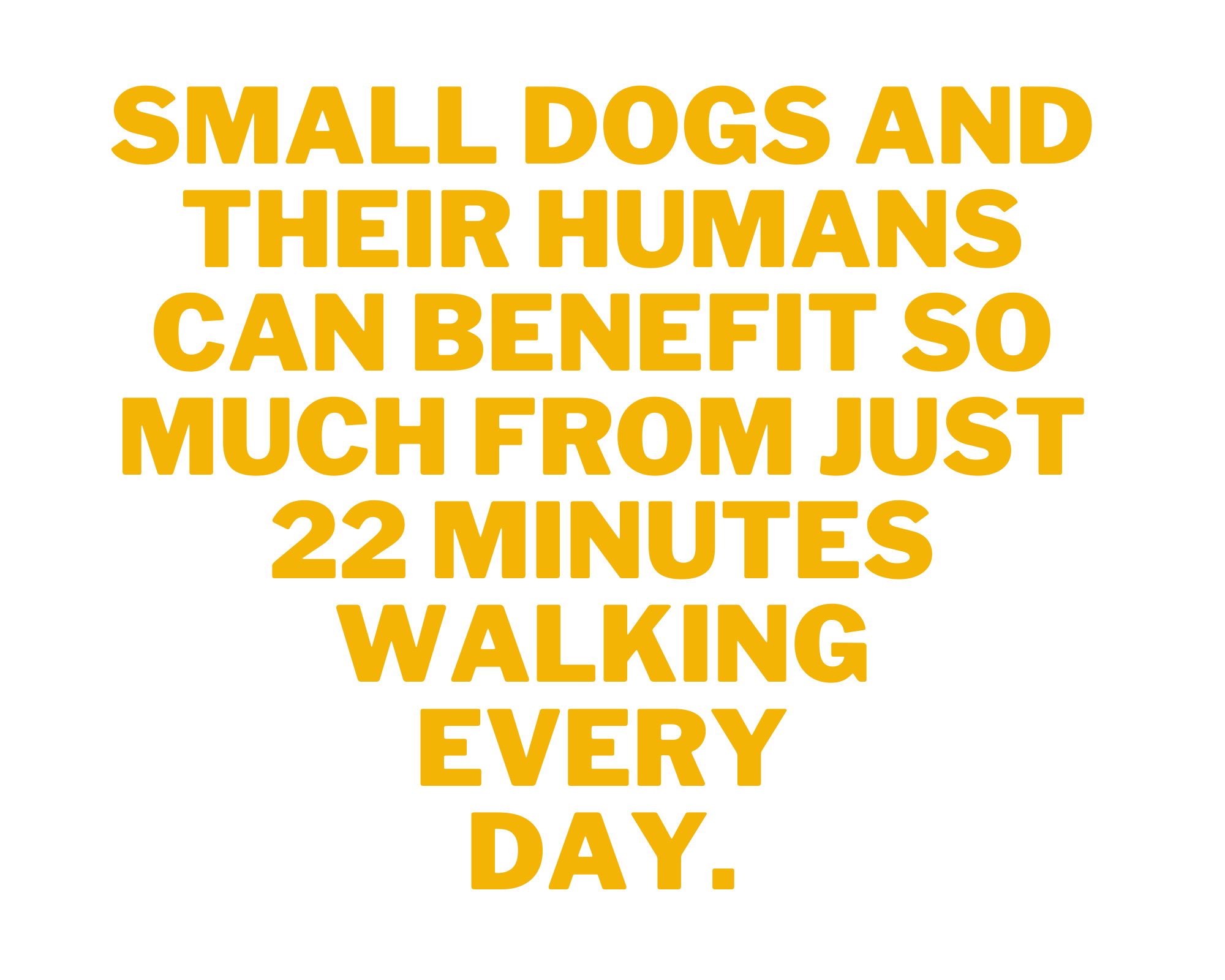
How Much Walking Do Small Dogs Need?
You know what I’m going to say here: it depends.
How long or how far you should walk your small dog varies based on their age, breed, and health. But, assuming your small dog is a healthy adult and that walking isn’t her only form of exercise, it’s well-established that at a minimum, small dogs should walk between 15-30 minutes a day. Furthermore, some experts recommend two 15 minute walks.
And What Are the Human Health Benefits of Regular Walking?
It seems unnecessary to cite the science, as we all know this…but physical activity is crucial for human health. According to Mayo Clinic, moderately brisk walking can strengthen your heart, keep your weight down, sharpen your brain, and a lot of other really good things.
The problem is the disconnect between what we know and what we do. So, researchers spend considerable time studying how to get humans off their rears and on their feet. One technique they’ve looked at revolves around dogs and their owners.
In “A cross-sectional study of factors associated with regular dog walking and intention to walk the dog,” scientists Carri Westgarth, Robert M. Christley, and Hayley E. Christian uncovered that people who set an intention to walk their dogs, and then actually do it, easily hit the minimum requirement of 150 minutes per week physical activity.
And for those of us with serious health challenges?
Well, our regular walking can significantly reduce our discomfort and pain. In fact, in their study entitled “Might Dog Walking Reduce the Impact of COPD on Patients’ Life?” researchers Ilaria Baiardini, Salvatore Fasola and others found that people with COPD experienced significantly reduced fatigue.
Use the Walk Warm-Up and Warm-Down for the Sniffari
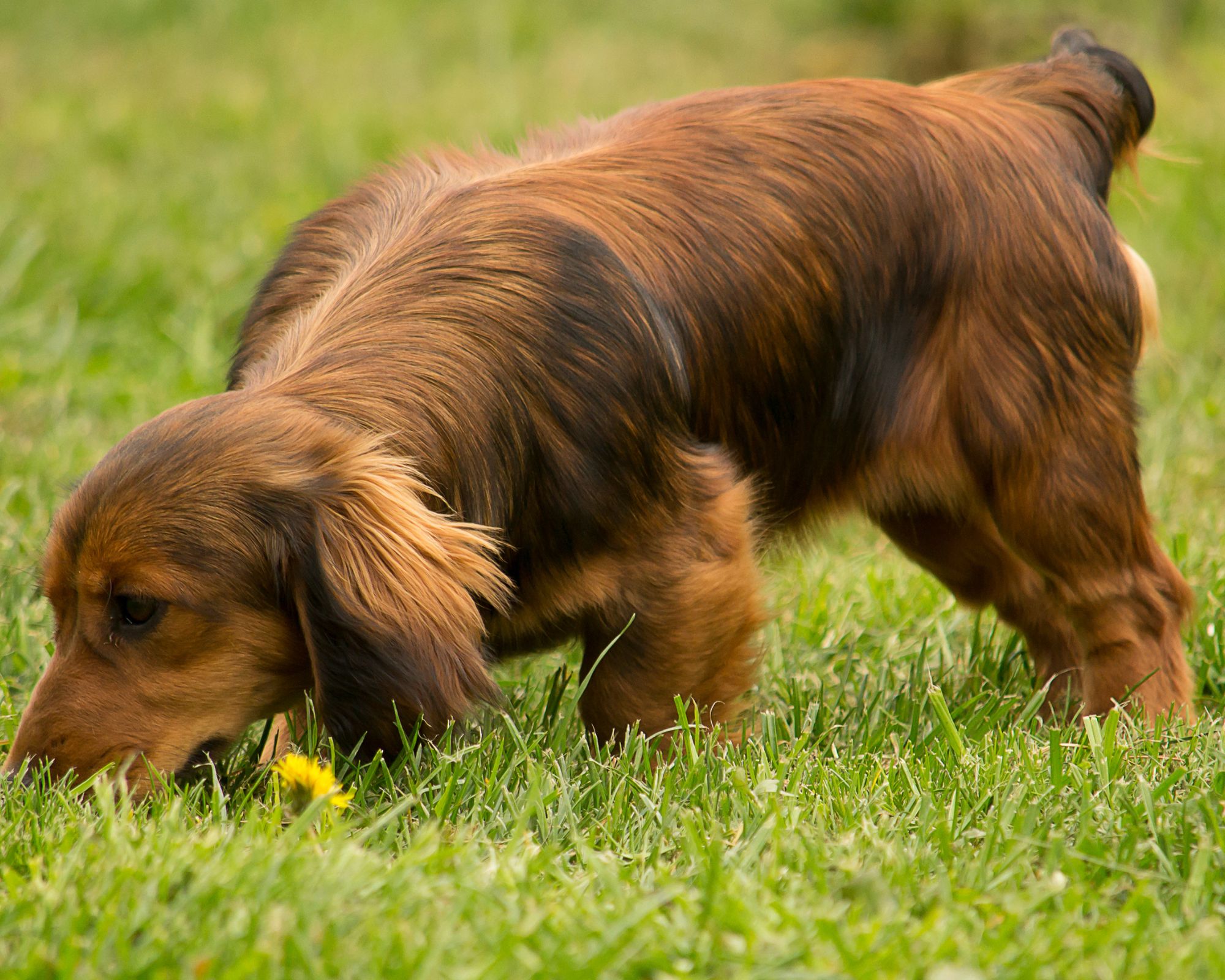
When we dog parents are doing our walk right, we should be warming up and cooling down. Here, Mayo Clinic suggests five or ten minutes on both ends of the walk.
Since we’re talking about 22 minute walks, I’m keeping my bookended sessions to five minutes each.
That’s perfect, because it gives the pups the first and last five minutes of our outings to enjoy a mini “sniffaris,” which a quick Google search shows are great for our pups’ brains and well-being.
But My Small Dog Doesn’t Like to Walk
The graphic above, from the Westgarth, Christley, and Christan study, shows that 40% of dog owners say their dog doesn’t like to go out in the rain or cold. This statistic surprised me, especially because the pet parents interviewed were primarily from the UK. I mean, according to the movies, everyone over there is accustomed to bad weather and simply ignores it. Apparently, their dogs do not.
Put simply, if your small dog doesn’t like the bad weather, it’s tough to deal with. Honestly, it’s hard enough to wrestle with our own rationalizations. But when your canine walking partner joins you in your excuses? That’s a big hurdle.
Nevertheless, we’ve got some suggested solutions, below.
How to Make Walks Fun for Your Small Dog (and for You)
Fortunately, this is (ironically) the fun part. Helping your small dog truly enjoy their walks with you is all about mindset and enthusiasm.
A Non-Dog Comparison
For example, as a teacher of high school students, I occasionally feel less than enthused about entering a roomful of seventeen-year-olds who aren’t naturally drawn to the life-changing powers of the written word. As a result, I could easily radiate my sometimes-frustrated feelings about our learning. And if I did so, my students would disengage. However, no matter my internal emotions, I nearly always manage to enter the class with an upbeat tone and happy greeting. I guide us through the entire class period expressing encouragement and enthusiasm for our time. Afterward, I end the hour with sincere warmth and good wishes for the rest of their days. All my behaviors here revolve around mindset.
And this mindset is contagious. Even students who hate English know they’ll be greeted with genuine care and engaged in meaningful work. Each class, it’s my intention that they feel good about being there, regardless of where they started. And most of the time, they do.
Oh, and guess what. Not even ten-minutes into the class, my mindset, aimed at helping adolescents be happy where they are, gathers me within its orbit. I, too, realize I’m glad to be there.
How Mindset Affects Our Small Dogs’ Experiences
In the same way, our mindset about walks travels down the leash to our small dogs. If we behave as though getting ready for a walk is as exciting as a holiday, if we talk with them and do mini-trainings along the way, and if we close the walks with special rituals, they will begin to experience excitement and we will go from faking it to feeling it as well.
Dog Walking Problems and Solutions
MY SMALL DOG IS TOO YOUNG OR TOO FRAIL TO WALK VERY FAR.
Use a backpack or stroller until you’re on the return walk home. Later, when you’re close enough to home that you know they can handle the distance, put them on their leash for the walk. The fact that they’ll sense they’re heading home will usually make them eager to enjoy the end of the walk, and you’ll have accomplished your own health goals.

MY SMALL DOG IS NERVOUS ON WALKS.
Here, you need to determine the reason for the nervousness. Take him on the route you’d normally use, and pay very close attention to the environment. What seems to create the issue? Loud noises? People wearing hoods? Particular ground cover? Once you’ve pinpointed the issues, brainstorm ways to help your pup adjust. Occasionally, mimic the issue in the safety of your home and use puppy socialization training tricks even with your adult small dog. Initially, use Google as your partner in this. If the tricks you find there don’t work for you, consider an online source like McCann Dog Training in Canada or hire a local expert.
-
Maybe it’s the noise?
If noise is the issue, then you need to work gradually with purposeful training to teach your pup that the sounds aren’t harmful to either of you. That means practicing at home and on walks. showing happy reactions and rewards around unusual sounds. It takes time and patience. And sometimes ear protection will help – we’ve heard good things about Mutt Muffs. (Affiliate Link).
- It’s the pavement, sidewalk, grass.
Of course, the easy fix for this is either to change your route or to find boots that work (if you find those, let me know. Phoebe and Scout always manage to walk right out of them.)Otherwise, as long as the ground cover isn’t actually hurting your pup, you simply need patience. Just as you would in any other teaching instance, work directly to help your pup realize the surface is not only safe, but fun. For instance, be upbeat and praise or reward them for walking even short distances on it. Gradually build up the distance and phase out the treats, and you’ll be enjoying the walks you both need.
- It’s the guy in the hood or hat coming toward us.
Phoebe and Scout both go into protection-mode when someone in a hat is walking toward us. Similarly, they once really freaked out if a man in a hood approached. We’ve improved the issue considerably through positive training. We’ve worn hoods and hats at home and walked toward them, teaching them people with head-coverings aren’t scary. Likewise, on our walks, we find that stopping the girls in a “sit” and waiting for the intimidating (to them) walker to pass us works best. I almost always have high-value treats with me to reward them for remaining calm. Eventually, they’ll come to see these potential threats as a welcome thing: it means treats are on the way.
MY SMALL DOG HATES THE RAIN.
Just like dealing with pavement or grass your pup dislikes, rain refusal takes patience. Take care of the physical challenges first. Maybe your small dog just doesn’t like being wet. So, use a rain jacket – this raincoat for small dogs is an Amazon hit (affiliate link). Or could it be your umbrella that’s scary? Use positive training techniques to accustom her to the large object for several weeks before using it again on a walk. Likewise, once you’ve addressed their possible physical objections, turn to positive training to overcome their mental blocks. Use your own excitement (c’mon, you LOVE the rain! Or at least you can pretend you do) to convince your small dog walking in wet stuff is a good thing. Use treats and toys, distraction and games outside in the rain to show them rain won’t interfere with their happiness.
MY SMALL DOG HATES THE SNOW.
Just as with rain, if snow is your small dog’s enemy, you’ve got to address their physical objections first. Obviously, the cold is a major concern. Small dogs lose body heat with scary rapidity. Find the best warm coats for your dog’s particular breed or mixed breed. Use paw protection (and if your small dog will tolerate them–mine won’t–use boots). We like Musher’s Secret Paw Protectant (affiliate link).
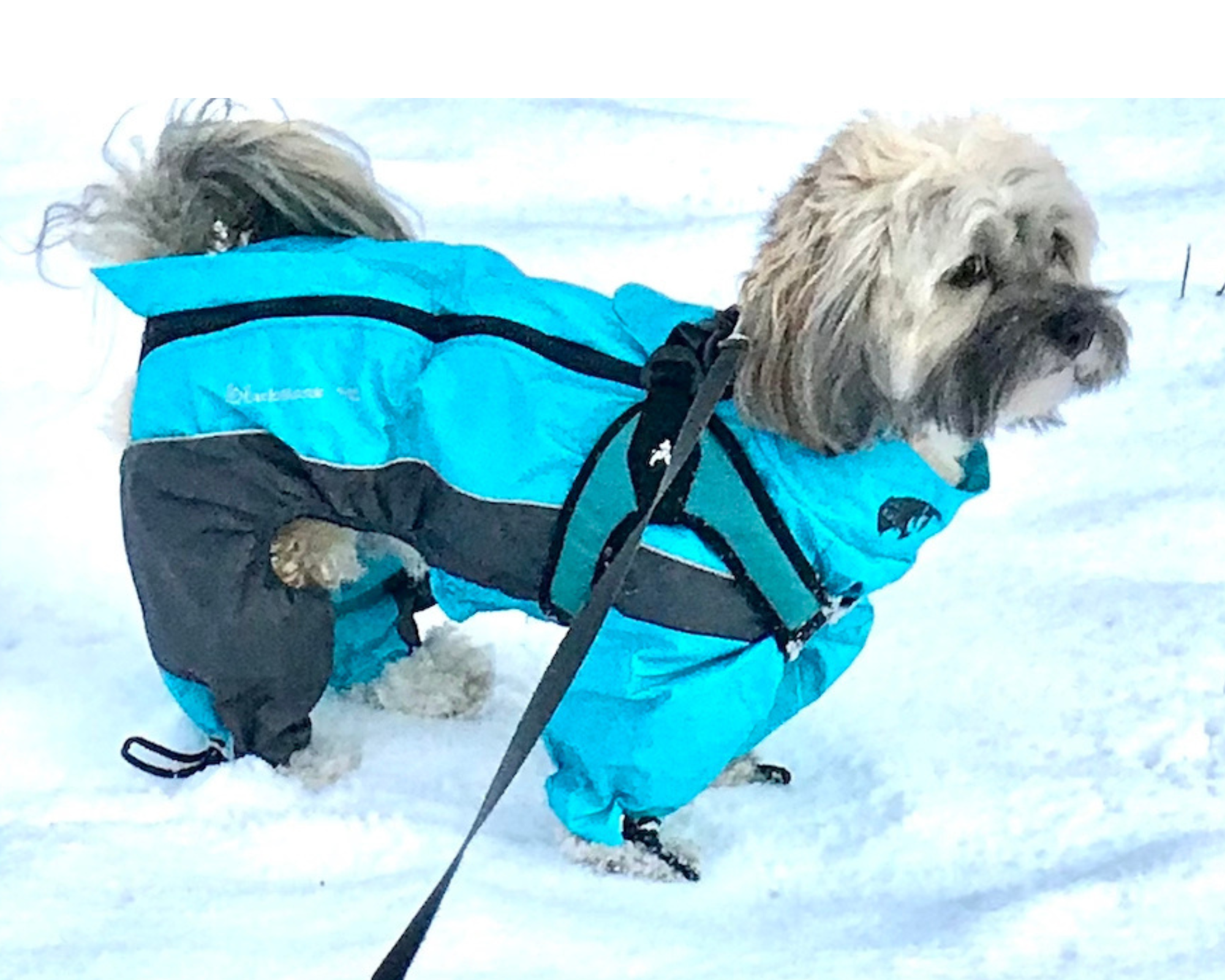
MY SMALL DOG REFUSES TO WALK.
Sometimes, a small dog will just freeze and refuse to walk for no apparent reason. The first step, of course, is to visit your vet to be sure there’s nothing hurting your pup. Whether it’s something as fixable as a minor paw injury or as elusive as some vision loss or mild arthritis, you need to be sure your small dog isn’t in confused or in pain on a walk.
Once those issues have been checked and addressed, and you know you’re dealing with a behavioral issue, it’s time for a reset.
That reset is beyond the scope of this article, but start with researching reputable training websites; look for articles on socializing your small dog on walks. Otherwise, bring in an expert trainer to teach you for an hour or so. Afterward, commit to working with your dog on these issues every day. Soon, you’ll both reap the benefits of stress-free walks.

No Excuses Now…Let’s Build to 22 Minutes Every.Single.Day.
Walking our small dogs 22 minutes EVERY day (or 150 minutes a week) will improve their happiness and health.
It will do the same for us.
So, you heard it here…I’m now becoming a “regular dog walker.”
Join me?
Thanks for reading! You might also enjoy our essay Hiking Alone with Your Dogs.

You’ll Also Love
Leave a Reply
Your email address will not be published.



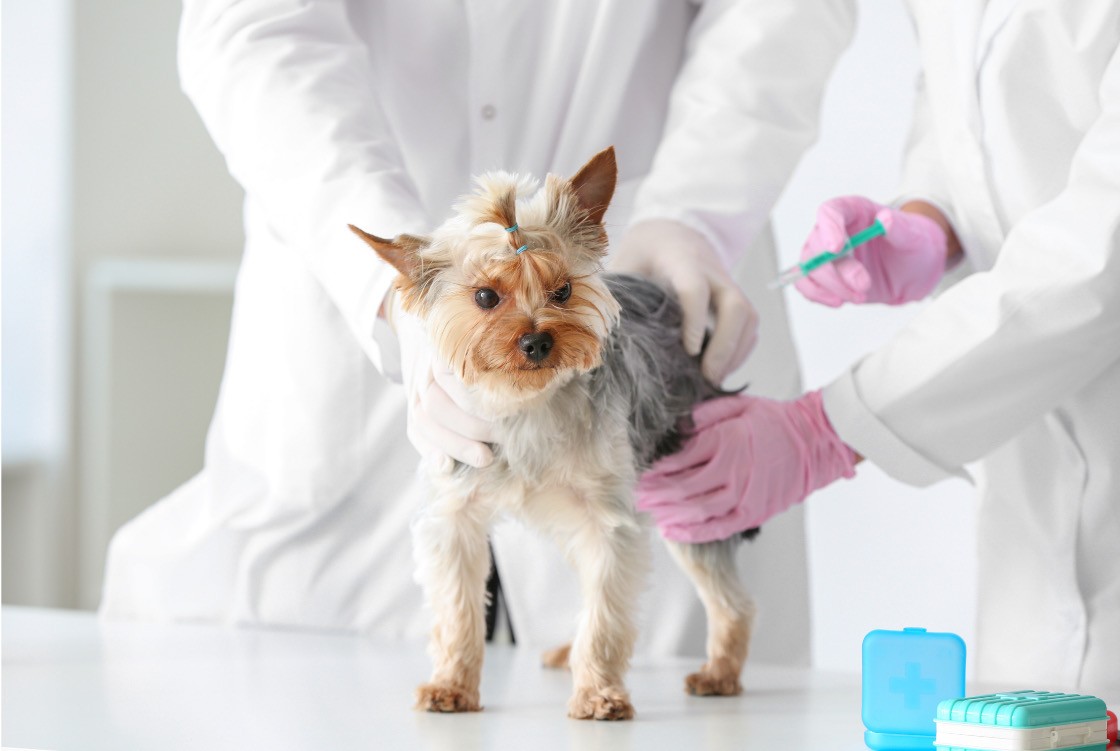

Hi Karen…Once again you inspire! I’ve decided to give this idea a go. 22 minutes, ok, I can do that. Mirabel loves to walk, but I haven’t had a commitment to an amount of time and the dailiness. Often she will sit in front of me and give me a very particular look as if to say, “I want to go for walk, Mom.” When she sees me put on my sneakers, she leaps for joy. The problem is not her, it’s me. So I hereby commit to walking her daily. Maybe not in the pouring rain as neither of us have the proper outfits, but I’m working on that. (Thanks for the raincoat link!) I always love a shopping opportunity :-) On behalf of Mirabel, she thanks you big time! It’s good for me too.
Oh, Coralie! Yes! It’s so great to have a long-distance walking compatriot :). I’ve made it about eleven days in a row now, I think. No real rain yet, but I was proud of myself for the 27 degree wind chill. Wow, were we cold.
I definitely need better cold-weather gear.
Thanks so much for letting us know you’re trying it too. I’ve noticed the girls spend much more time playing with their toys after we walk. They’re just happier. And I know I feel better. Give Mirabel a scritch from me.
We love this challenge! Great info.
Thank you, Riki!! Miss that face of yours -xoxo